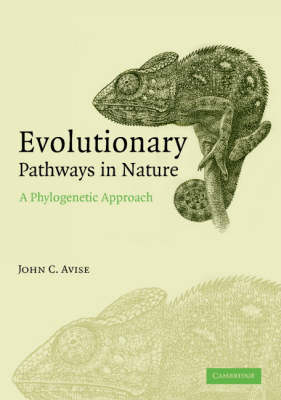
Evolutionary Pathways in Nature
A Phylogenetic Approach
Seiten
2006
Cambridge University Press (Verlag)
978-0-521-67417-1 (ISBN)
Cambridge University Press (Verlag)
978-0-521-67417-1 (ISBN)
This book provides a non-technical introduction to how phylogenetic analyses can be used to understand evolutionary pathways. The author escorts readers on historical journeys into the origins of many of nature's most intriguing evolutionary outcomes, from the toucan's enormous bill to pregnant male seahorses.
Reconstructing phylogenetic trees from DNA sequences has become a popular exercise in many branches of biology, and here the well-known geneticist John Avise explains why. Molecular phylogenies provide a genealogical backdrop for interpreting the evolutionary histories of many other types of biological traits (anatomical, behavioral, ecological, physiological, biochemical and even geographical). Guiding readers on a natural history tour along dozens of evolutionary pathways, the author describes how creatures ranging from microbes to elephants came to possess their current phenotypes. Essential reading for college students, professional biologists and anyone interested in natural history and biodiversity, this book is packed with fascinating examples of evolutionary puzzles from across the animal kingdom; how the toucan got its enormous bill, how reptiles grow back lost limbs and why Arctic fish don't freeze.
Reconstructing phylogenetic trees from DNA sequences has become a popular exercise in many branches of biology, and here the well-known geneticist John Avise explains why. Molecular phylogenies provide a genealogical backdrop for interpreting the evolutionary histories of many other types of biological traits (anatomical, behavioral, ecological, physiological, biochemical and even geographical). Guiding readers on a natural history tour along dozens of evolutionary pathways, the author describes how creatures ranging from microbes to elephants came to possess their current phenotypes. Essential reading for college students, professional biologists and anyone interested in natural history and biodiversity, this book is packed with fascinating examples of evolutionary puzzles from across the animal kingdom; how the toucan got its enormous bill, how reptiles grow back lost limbs and why Arctic fish don't freeze.
John C. Avise is a Distinguished Professor of Ecology and Evolutionary Biology at the University of California, Irvine.
Preface; 1. Introduction; 2. Anatomical structures and morphologies; 3. Body colorations; 4. Sexual features and reproductive lifestyles; 5. More behaviors and ecologies; 6. Cellular, physiological, and genetic traits; 7. Geographical distributions; Epilogue; Appendix A: A primer on phylogenetic character mapping; Glossary; References and further reading; Index.
| Erscheint lt. Verlag | 4.5.2006 |
|---|---|
| Zusatzinfo | 100 Line drawings, unspecified |
| Verlagsort | Cambridge |
| Sprache | englisch |
| Maße | 173 x 247 mm |
| Gewicht | 614 g |
| Themenwelt | Naturwissenschaften ► Biologie ► Evolution |
| Naturwissenschaften ► Biologie ► Ökologie / Naturschutz | |
| ISBN-10 | 0-521-67417-4 / 0521674174 |
| ISBN-13 | 978-0-521-67417-1 / 9780521674171 |
| Zustand | Neuware |
| Haben Sie eine Frage zum Produkt? |
Mehr entdecken
aus dem Bereich
aus dem Bereich
Wie die Vernichtung der Arten unser Überleben bedroht - Der …
Buch | Softcover (2023)
Penguin (Verlag)
CHF 20,95


